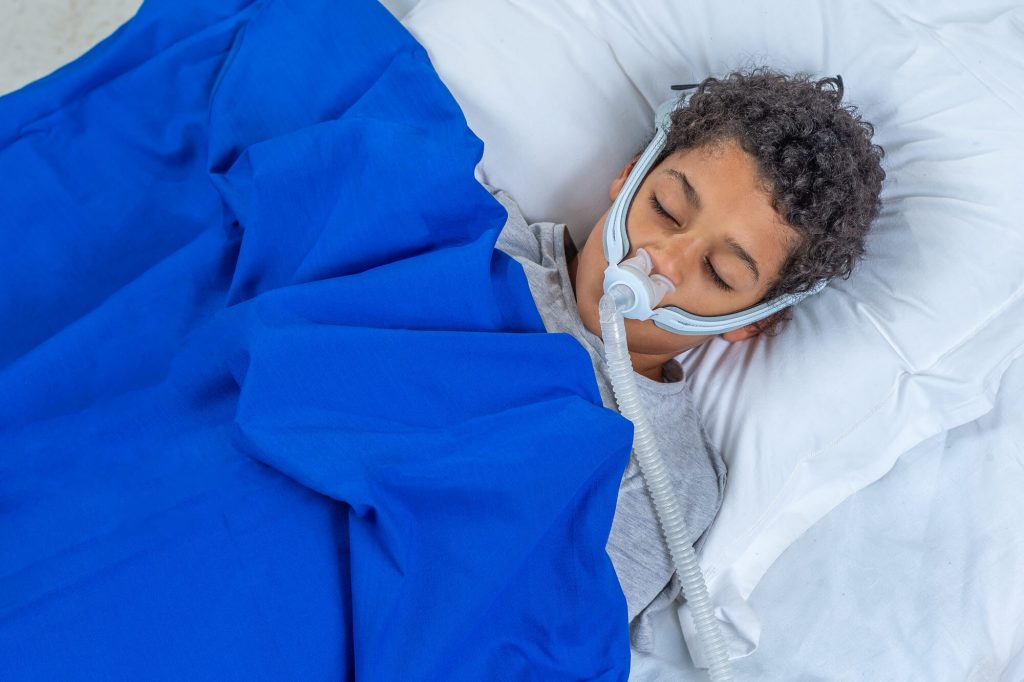Obstructive sleep apnea (OSA) isn’t only concerning because it attacks when you’re most vulnerable but also because it makes you feel desperate and helpless. This issue now affects at least 25 million people in the US, many of which are still children. Obstructive sleep apnea already sounds scary to adults, so imagine how frightening it is for someone who barely understands what’s happening and can’t control their fear. If you want to help your kid defeat the OSA monster, learn more about this condition and which other factors cause it, and check out how a sleep apnea dentist in Las Vegas can provide treatment.

What Is Pediatric Obstructive Sleep Apnea (OSA)?
Pediatric obstructive sleep apnea is a sleep disorder that interferes with your kid’s breathing while they’re asleep. When a child suffers from this condition, they stop breathing for a few seconds or even minutes, which blocks oxygen flow to their brain and other parts of their body.
This process can either be a one-time thing or happen several times in a single night, putting your little one through a lot of stress. Over time, obstructive sleep apnea can impair your child’s learning skills and affect their conduct in school and at home, so catching this disorder quickly is of the essence.
If you believe your child hasn’t been getting a good night’s sleep due to OSA, be on the lookout for the following symptoms:
- Paused breathing
- Snoring
- Constant lack of sleep
- Bedwetting
- Increased sweating during the night
Even though all kids are at risk, certain circumstances increase your child’s chances of getting pediatric obstructive sleep apnea.
Factors Putting Your Child at Risk of Pediatric Obstructive Sleep Apnea
Being Overweight
Being overweight is a determining factor for children and adults alike. People with obesity have increased fat around their neck, throat, and tongue, and these fat deposits can obstruct the upper airways. If your child has this problem, they might not be able to breathe properly at night. Excessive weight also leads to having a broader neck, which can result in choking at night. By losing some weight, many OSA patients experienced less severe and frequent episodes of this disorder.
Family History of OSA
Genetics plays a crucial role in your odds of suffering from a condition, and pediatric obstructive sleep apnea is no different. If you or your parents had this sleep disorder as children, your kids will likely experience episodes of OSA at one point during their childhood. Obstructive sleep apnea can result from specific facial features, such as narrow airways or an enlarged tongue. Passing on these traits to your son or daughter makes them more prone to breathing problems at night.
Narrow Airways
Narrow airways are usually a characteristic you pass on to your children, and it’s one of the main culprits behind pediatric obstructive sleep apnea. When your kid’s nostrils are too small, or their septum is narrow, less air goes through their airways, impairing their breathing. Episodes of this condition happen more frequently when you pair narrow airways with congestion. Since no air can go through your nose, your child ends up snoring and possibly experiencing OSA overnight.
Enlarged Adenoids and Tonsils
Finally, your children might fall victim to pediatric obstructive sleep apnea if their adenoids and tonsils enlarge. Your adenoids lie at both sides of your throat, and your tonsils are two tissue masses located above the roof of your mouth.
When you’re sick, your body’s immune system responds by making these lumps of tissue bigger to trap bacteria and fight infection. As helpful as this mechanism is in healing you, obstructive sleep apnea can be part of the aftermath. Therefore, if your child has tonsilitis or other viral or bacterial diseases, know they might be at risk of suffering from OSA.
Is Pediatric Obstructive Sleep Apnea Treatable?
To you and your child, it might look like there’s no escaping the detrimental effects of pediatric obstructive sleep apnea. Luckily, dentists and sleep professionals have developed many solutions to address this issue and make your kid sleep soundly again. For instance, many patients turn to continuous positive airway pressure (CPAP) to tackle this sleep disorder. If you choose this technique, your child has to use a mask that covers their nose and mouth overnight. This machine will pump air through their airways to facilitate oxygen flow and prevent obstructions.
CPAP is highly effective in dealing with pediatric obstructive sleep apnea symptoms, but it isn’t always a good match for children. If your kid moves a lot during the night or feels claustrophobic while using the mask, there are other treatment options available, such as:
- Hypoglossal nerve stimulation
- Somnoplasty
- Nasal surgery
- Oral appliances
However, not all options are fit for every patient. Make sure to talk to a sleep apnea dentist to determine which solution is best for your child.

Does Your Child Need to Visit a Sleep Apnea Dentist in Las Vegas?
Thanks to our sleep apnea dentists at Dee for Dentist, your children no longer have to fear the terrible OSA. Contact us today to learn more about the services we offer!
